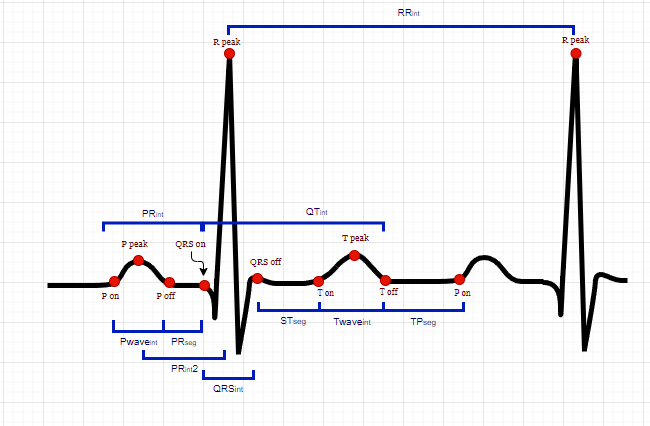PECG API REFERENCE¶
PhysioZoo ECG documentation¶
Digital electrocardiography biomarkers to assess cardiac conduction.
Based on the paper S. Gendelman et al., “PhysioZoo ECG: Digital electrocardiography biomarkers to assess cardiac conduction,” 2021 Computing in Cardiology (CinC), 2021, pp. 1-4, doi: 10.23919/CinC53138.2021.9662857.
Introduction¶
The electrocardiogram (ECG) is a standard tool used in medical practice for identifying cardiac pathologies. Because the necessary expertise to interpret this tracing is not readily available in all medical institutions or at all in some large areas of developing countries, there is a need to create a data-driven approach that can automatically capture the information contained in this physiological time series. The primary objective of this package is to identify and implement clinically important digital ECG biomarkers for the purpose of creating a reference toolbox and software for ECG morphological analysis.
Description¶
Few steps are required to extract the morphological ECG biomarkers, those steps were implemented in the PECG toolbox:
ECG Signal Preprocessing - Before computing the ECG morphological biomarkers, prefiltering of the raw ECG time series is performed to remove the baseline wander and the high frequency noise. Specifically, the toolbox includes a zero phase second-order infinite impulse response bandpass filter with the passband of 0.67Hz - 100Hz. Also, the toolbox includes an optional Notch filter that can be set to 50 or 60Hz to remove the power-line interference.
ECG Fiducial Points Detection - The toolbox includes the epltd R-peaks algorithm, and the well-known wavedet algorithm for ECG fiducial points detection.
Engineering of ECG Biomarkers - Using the fiducial points ECG biomarkers are engineered for individual ECG cycles. When a biomarker cannot be engineered because some fiducial points could not be detected by wavedet, then the feature was marked as a NaN. For an ECG channel, a total of 14 features are extracted from intervals duration and 8 from waves characteristics to describe the ECG morphology.
Summary Statistics - For a specified time window the six summary statistics (mean, median, min, max, IQR and std) are computed for all ECG biomarkers.

Installation¶
Available on pip, with the command:
pip install pecg
Requirements¶
Python >= 3.6
numpy
mne
wfdb
All the python requirements except wfdb are installed when the toolbox is installed. To install wfbd run: pip install wfdb
System Requirements¶
To run the wavdet fiducial-points detector matlab runtime (MCR) 2021a is required.
If you wish to use the epltd peak detector additional wfdb toolbox is required.
If you don’t want or can’t install this - It’s Ok! you can use another peak detector from the package.
Installation instructions:¶
Install the “pecg” package using pip by running the command line: “pip install pecg”.
Install the “wfdb” package using pip by running the command line: “pip install wfdb”.
Follow the guidelines provided in the link: https://www.mathworks.com/products/compiler/matlab-runtime.html, and choose the version of 2021a(9.10).
Documentation¶
https://pecg.readthedocs.io/en/latest/
An example code is available at https://github.com/aim-lab/pecg_tutorial/blob/main/FeatureEngineering.ipynb